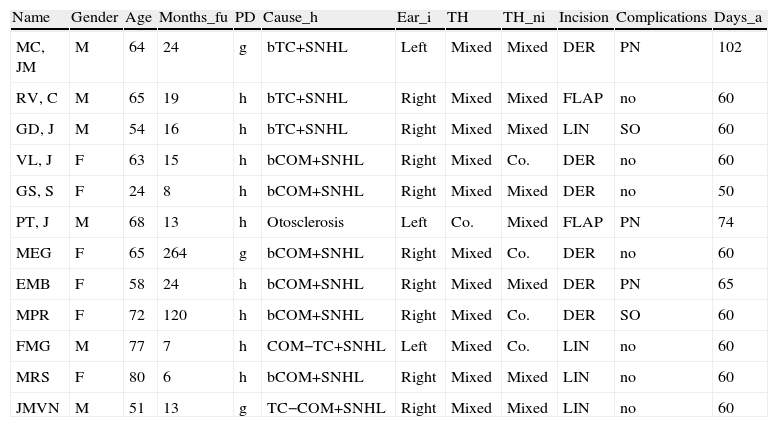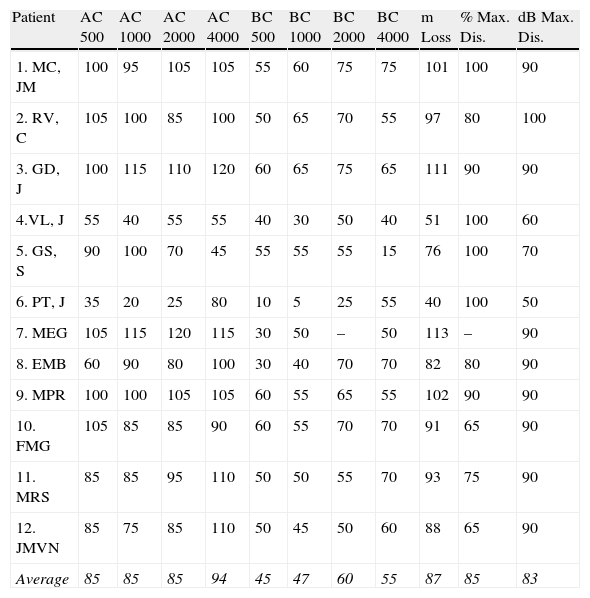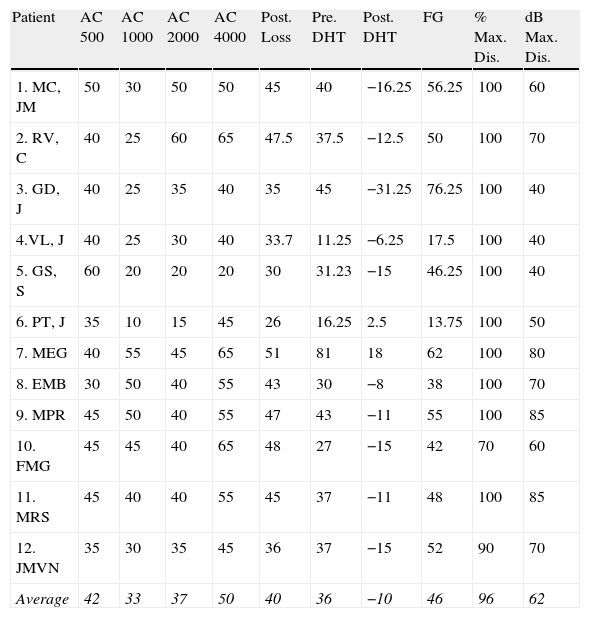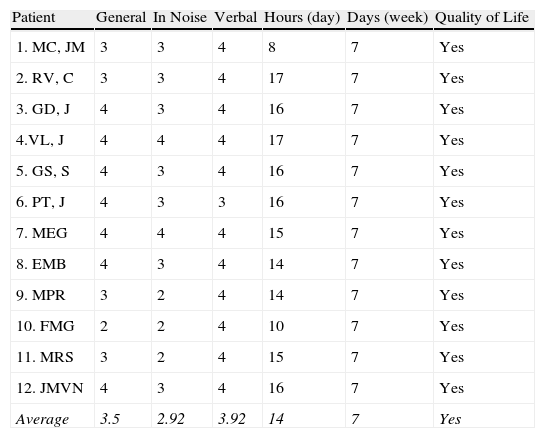Evaluation of the audiological outcome and subjective satisfaction of BAHA Cordelle II in the treatment of patients with severe to profound bilateral mixed hearing loss.
Material and methodRetrospective study of 12 patients suffering a severe to profound bilateral sensorineural hearing loss, using pure tone audiometry (PTA), speech audiometry and subjective evaluation before and after the implantation of a BAHA Cordelle II (Cochlear®).
ResultsThe average gain in conversational frequencies (0.5 to 4kHz) with BAHA in free field was 43, 51, 47, and 44dB, respectively. We observed a GAP over closure in 10 of the 12 patients. Speech audiometry improved from 85% at 83dB of maximum discrimination to 96% at 62dB. The subjective evaluation questionnaires showed great satisfaction with a slight decrease in noisy or windy environments. The great majority of our patients used the BAHA device throughout the entire day.
ConclusionsThe BAHA Cordelle II (Cochlear®) is a good option in the treatment of severe to profound bilateral mixed hearing loss. Its best advantages are a low risk of labyrinthization, high result predictability, easy and step-by-step surgery, no need for general anaesthesia, and the GAP over closure in all frequencies. Active middle ear devices represent another alternative, but specific indications have not been defined yet because of low universal experience. When the intelligibility of the patient is poor, cochlear implantation should be considered.
Evaluar el rendimiento auditivo del BAHA Cordelle II en el tratamiento de pacientes afectados de hipoacusias mixtas de severas a profundas bilaterales.
Material y métodoEstudio retrospectivo de 12 pacientes afectados de hipoacusia mixta de severa a profunda, con audiometría tonal liminar, logoaudiometría y encuesta subjetiva antes y después de la implantación de un BAHA Cordelle II (Cochlear®).
ResultadosLa ganancia promedio con el BAHA en campo libre de todos los pacientes en las frecuencias conversacionales (0,5 a 4 khz) fue de 43, 51, 47 y 44dB, respectivamente. Se obtuvo un sobrecierre del umbral diferencial auditivo (UDA) en todas las frecuencias en 10 de los 12 pacientes. La logoaudiometría pasó de un 85% de discriminación máxima promedio a 83dB a un 96% a 62dB. Los cuestionarios subjetivos mostraron un alto grado de satisfacción del uso del BAHA, si bien su rendimiento disminuyó en ambiente ruidoso y con el viento. La inmensa mayoría de usuarios utilizan el BAHA a lo largo de todo el día.
ConclusionesEl BAHA Cordelle II (Cochlear®).es una buena alternativa en el tratamiento de los pacientes afectados de una hipoacusia mixta de severa a profunda bilateral. Su mínimo riesgo de laberintización, su alta previsibilidad de resultados, su cirugía fácil y muy reglada, la anestesia habitualmente local y el cierre del UDA en casi todas frecuencias son sus mayores ventajas. Los dispositivos activos de oído medio representan otra alternativa más compleja, aunque sus indicaciones específicas no están aún bien definidas por la falta de experiencia mundial. Cuando la inteligibilidad del paciente es muy pobre se debe considerar, como mejor alternativa, la indicación de un implante coclear.










